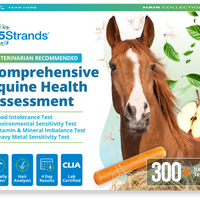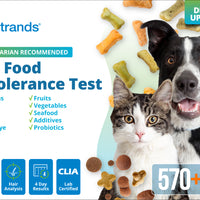The relationship between food intolerances and weight is a major part of functional health. But, for the consumer; what do food intolerances and weight have in common?
The gut biome.
When we have healthy gut biomes (digestive processes, stomach acids, and gut biomes) our weight is not an issue. When any or all of these processes are out of balance, we can gain or lose excessive amounts of weight; and excessive weight fluctuations are indicative of serious health issues, of which most are related to gut health, neurochemicals, and how our bodies react to stress. The food we eat is the single most important factor to healthy weight which is a balance between muscle, fat, mineral content and water in the body.
Some of the most common food intolerances include lactose/dairy issues, nuts, shellfish, and grains/gluten. These intolerances can affect both the brain and the gut, and also cause systemic inflammation throughout the body.

What does systemic inflammation look like?
Systemic inflammation looks like chronic pain, headaches, and usually weight gain or weight loss. These weight issues are surrounded by puffiness and bloating after a meal and then a period of gassiness and/or nausea, and possibly constipation or diarrhea. All of which are symptoms of gut dysbiosis and are uncomfortable to the person experiencing them.
If these symptoms persist over a longer period of time, they can lead to medical conditions that are most often (mis) diagnosed as Chronic Fatigue Disorder, Irritable Bowel Syndrome, SIBO, Fibromyalgia, Pre-Diabetes, Autoimmune Disorders, and Celiac Disease. Many times, physicians will make these diagnoses based on symptoms – without testing formally, and people will be given medications to counteract the symptoms. This is not to say the conditions do not exist, but the diagnosis may be faulty and conditions can be reversed.
Clinically, food intolerances can and do affect the gut biome and can lead to official diagnosis of ulcers, Celiac disease, SIBO (small intestine bacterial overgrowth), Type II Diabetes, Irritable Bowel Syndrome, Thyroid Issues, and various autoimmune disorders – but a true diagnosis is made after blood testing, gut biome analysis, stool analysis, endoscopy, and CO2 testing. If testing confirms a diagnosis, patients are then referred to a nutritional counselor or registered dietician to relearn eating habits – but the causative food intolerances are rarely addressed.
Functional Medicine takes a different approach in that a person’s diet, eating habits, and lifestyle will be evaluated; and this is the point of understanding on how food intolerances can cause gut dysbiosis (imbalance of gut flora) and leaky gut syndrome (enlarged pores in small intestines) that can affect a person’s weight.

Weight Gain
Weight gain usually originates from the body storing fat. In the process of digestion, the gut is integral for breaking foods down. Carbohydrates (sugars) and fats are separated and the brain uses them for nutrition and energy. If a food intolerance exists, the brain might not be able to absorb the proper nutrients and as a result, may send mixed hormonal messages – i.e. leptin and ghrelin, to the body to eat more foods and store fats.
Leptin helps signal the brain that the body has enough energy stores such as body fat. But many obese people don't respond to leptin's signals even though they have higher levels of leptin. In general, the more fat a person has, the more leptin will be found in the blood. This is a primal protective instinct the brain has developed to help humans endure famine or have fuel for recovery after illness or injury. Depending on the amounts of hormones secreted, eating habits (rushed, binge, or continuous snack eating) can affect digestion and slow metabolism.
The most common intolerances that contribute to weight gain are sugars, dairy, gluten / grain. Here are some resources from celiac.org to help people learn about the hidden source of both in many foods.
From Celiac.org
There are many hidden forms of gluten that most people are unaware of or are not labeled as gluten on packaged foods. These include Artificial coffee creamer, Beer, Bouillon cubes, Broth/stocks, Candy, Certain ground spices, Certain veined cheeses, Chewing gum, Chips, Cold cuts, Flavored teas, Flavored rice, Fish sticks, French fries, Gravies, Hot dogs, Imitation seafood, Instant coffee and other instant hot drinks, Ketchup, Matzo flavor, Mustard, Mayonnaise, Pasta side dishes, Rice mixes, Roasted nuts, Soy sauce, Salad dressings, Seitan (wheat gluten, used in meat substitutes), Self-basting turkey, Teriyaki sauces, Tinned baked beans, Tomato sauces, Vegetable cooking spray, Veggie burgers, Vodka, Wine coolers.
When shopping, it is imperative for consumers to read labels, because many ingredients or additives have hidden forms of gluten: Artificial color, Baking powder, Barley extract or lipids, Brown rice syrup, Caramel color/flavoring (frequently made from barley), Citric acid (can be fermented from wheat, corn, molasses or beets), Coloring, Dextrins (primarily corn and potato, but can come from wheat, rice, tapioca), Diglycerides, Emulsifiers, Enzymes, Fermented grain extract, Fat replacers, Flavorings, Food starch, Gelatinized starch, Glucose syrup, Glycerides, Hydrolysate, Hydrolyzed malt extract, Hydrolyzed oat flour or protein, Hydrolyzed plant protein (HPP), Hydrolyzed soy protein, Hydrolyzed vegetable protein (HVP), Malt extract, Maltodextrin (corn, wheat, potato, rice), Mustard powder (some contain gluten), Monosodium Glutamate (MSG), Modified food starch (source is either corn or wheat), Natural juices, Natural flavoring, fillers, Peptide bonded glutamine (hydrolyzed wheat gluten), Rice malt (contains barley or Koji), Rice syrup (contains barley enzymes), Sulfonate, Stabilizers, Starch, Triticum aestivum (common or bread wheat), Wheat starch, Whey protein concentrate, Whey sodium caseinate, White vinegar or white grain vinegar, and Yeast extract

Both lists are quite daunting, but when we think about the extent that gluten is in our foods, along with the stresses to our bodies trying to digest them, we can see a clear pattern of gut dysfunction through unexplained weight changes.
Weight Loss
Weight loss usually happens when the body utilizes more calories than it consumes, or when the body does not absorb the necessary nutrients for foods and draws on its stored energy from fat. All humans have fat reserves, brown and white/yellow that function to provide energy. But if the fat reserves are tapped too hard, not only will weight loss occur, but physiological symptoms will develop.
Food intolerances can inhibit the brain’s ability to utilize, convert, or store fat. When food isn’t properly digested, the brain is not able to correctly cue the hypothalamus and thyroid. These miscues can cause a decrease in leptin, changes in liver enzymes, and an unhealthy increase in metabolism.
Resolution
With either weight loss or weight gain, people can find relief and biohack their metabolism through food intolerance testing. The body is a remarkable machine that has the necessary tools to repair itself. When we look at the most common food intolerances (lactose/dairy issues, nuts, shellfish, and grains / gluten) we can usually see the brain and gut based health conditions that can be reversed.
The simplest course of action is to remove all known and suspected irritants to the digestive system through an elimination diet. Some dieticians recommend 2 weeks, but experience shows that symptoms will likely alleviate within two weeks, but inflammation will not resolve before 30-60 days.
After the elimination diet, the body will be able to have more defined reactions to foods that are slowly added back into the diet. We recommend eating the foods that show a lesser intolerance first, then gradually adding in foods, one meal at a time. If symptoms are noted, we recommend that people document the symptom, how the food was cooked (stir fried, baked, fried, boiled, raw) and then eliminate it from their diet permanently.
The 5Strands Affordable Test gives you a holistic approach to taking back your health. The FOOD INTOLERANCE TEST offers intolerance testing to 640+ proteins, grains, fruits, vegetables, seafood, gluten, additives, preservatives, sweeteners, beverages, dairy, fats, etc. This at home hair collection kit is simple to utilize. It uses bioresonance technology to determine the foods creating the imbalance in the gut microbiome. Your results will help guide you to eliminate any intolerance or sensitivity and allow time for the gut to rebalance.




























